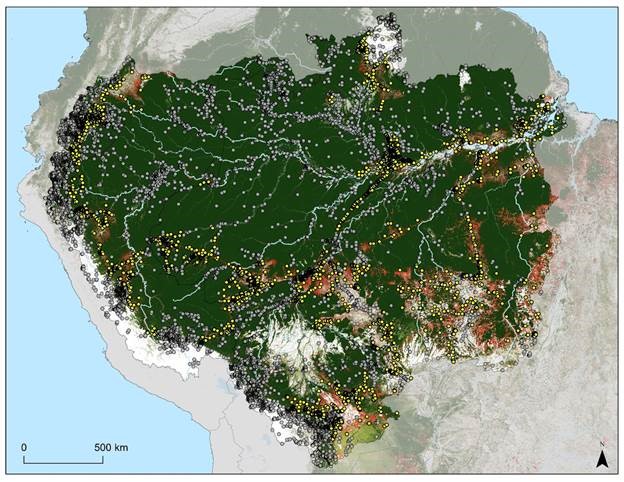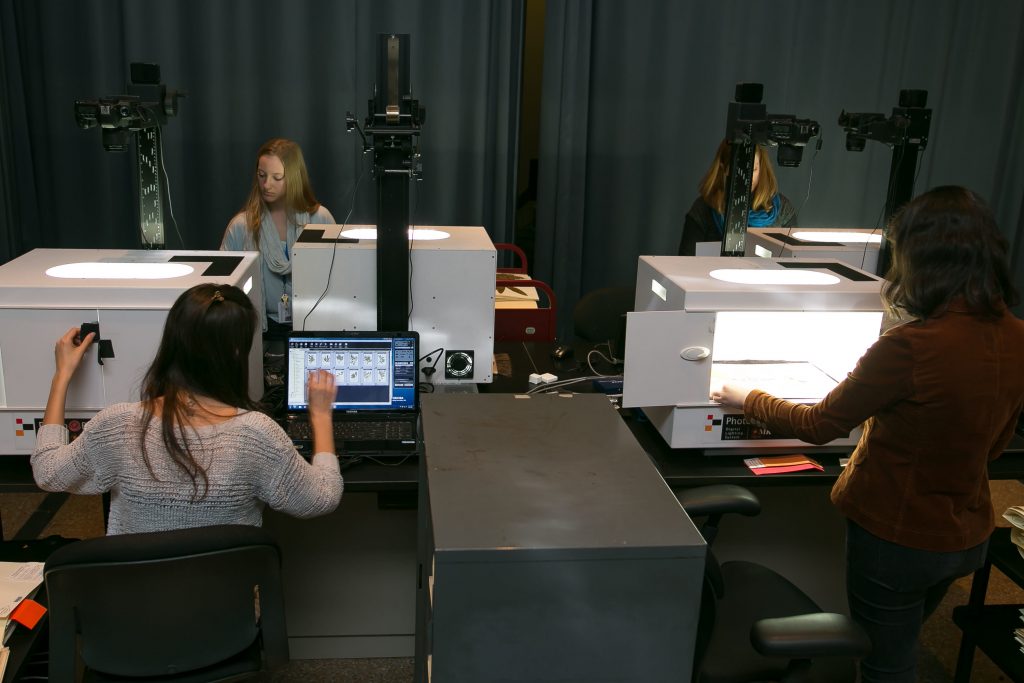The Biodiversity Information Management team works to digitize and make freely available NYBG’s world-renowned botanical natural history collection and other science-related resources.
The Steere Herbarium, cornerstone to the Garden’s plant research and conservation program, is a museum collection of more than 7.8 million archivally preserved specimens of vascular plants, bryophytes, algae, fungi, and lichens collected from all over the world throughout the last few centuries.
Digitization of the Steere Herbarium began in 1995, and has become an integral part of Herbarium daily operations. Numerous dedicated staff, interns, and volunteers work toward a common goal: to catalog, image, and georeference every specimen in the collection.
Funding for digitization is provided primarily through grants and donors. A summary of past and current projects is available on our projects page.
HOW WE PROCESS DATA
Digitization
The Digital Imaging Center is the heart of NYBG’s specimen digitization program
CMS
Axiell EMu Collections Management System is the primary repository for all digitized collections
GIS
The Geographical Information Systems (GIS) Laboratory analyses and visualizes geospatial data
IPT
Our Integrated Publishing Toolkit is publicly available to publish and share biodiversity datasets

WEB DEVELOPMENT
Digitization of the collection would not be complete without publishing these data to the web. No matter where you are, we bring context for the plant specimens we have digitized to your screen. Our online database has made it easy for researchers and other users to acquire data and understand global patterns of plant diversity. Access to our collections- and research-based websites is available through Science Digital.
To explore our specimen data, please visit the Virtual Herbarium.
DIGITIZATION PROTOCOLS
Highly efficient protocols are necessary to reach the Steere Herbarium’s digitization goal in a timely manner.
Most projects begin with an indexing step, where large batches of specimens are catalogued with minimal data including the specimen’s scientific name and barcode number. Next all catalogued specimens are digitally photographed in the Digital Imaging Center, after which the images are post-processed, uploaded to EMu, and processed with Optical Character Recognition (OCR) software. The OCR-generated text files are then uploaded to EMu, enabling digitizers to group images with similar collection labels for more efficient transcription using EMu’s customized rapid data entry fields.
See our digitization resources for more details.
